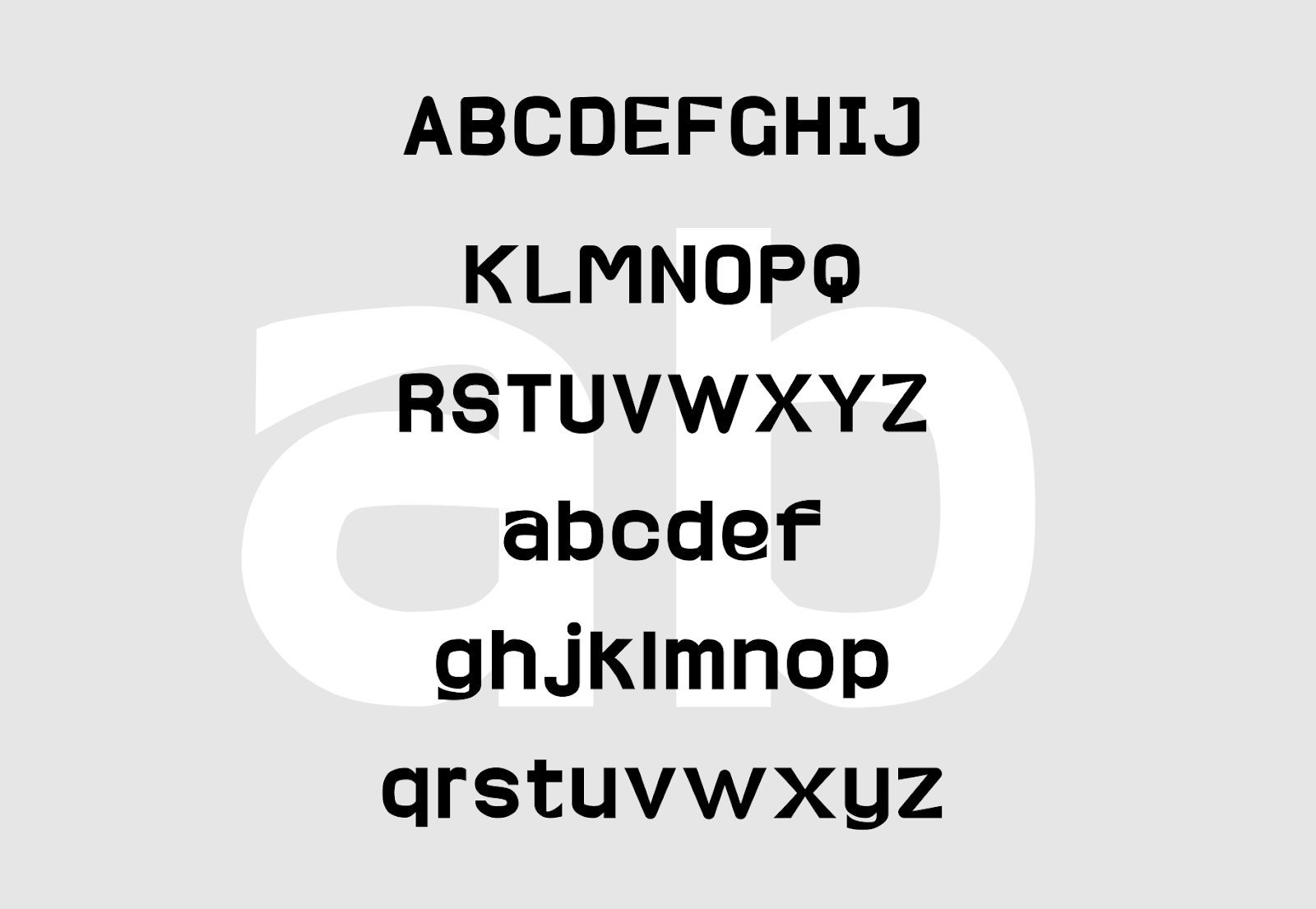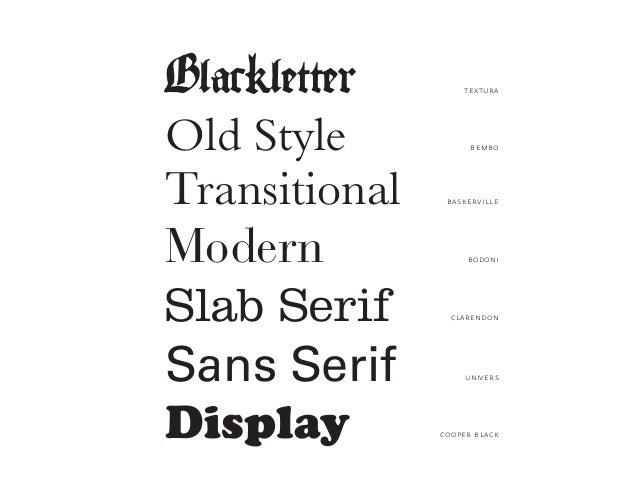
The differences between thick and thin strokes in transitional typefaces are more pronounced than they are in old style serifs, but less so than in modern serifs. Times New Roman and Baskerville are both transitional serif fonts, as are Caslon, Georgia, and Bookman. Transitional serifs date back to the mid 1700s, and are generally the most common serif typefaces. Typefaces in this category include Adobe Jenson, Centaur, and Goudy Old Style. The main characteristic of old style characters is their diagonal stress (the thinnest parts of the letters appear on the angled strokes, rather than the vertical or horizontal ones). Old Style serifs (also called humanist) are the oldest typefaces in this classification, dating back to the mid 1400s. Glyphic Serifs like Albertus, Cartier Book, and Friz Quadrata.Clarendon Serifs like Bookman, Clarendon, and Nimrod.Slab Serifs like American Typewriter, Rockwell, and Soho.Neoclassical & Didone like Didot, Marconi, and Bodoni.

Transitional Serifs like Times New Roman, Baskerville, and Americana.Old Style Serifs like Adobe Jenson, ITC Berkeley Oldstyle, and Goudy Old Style.Within the serif classification, there are many sub-types. The readability of serifs online has been debated, and some designers prefer not to use serifs for large blocks of copy. Serif typefaces are most often used for body copy in print documents, as well as for both body text and headlines online. Serif typefaces are called “serifs” in reference to the small lines that are attached to the main strokes of characters within the face. You can find a diverse range of fonts under these typefaces. We will go over 6 different typefaces which are own characters. monospaced, or by more fluid and interpretational definitions, such as the mood they create. The most common classifications are by technical style: serif, sans-serif, script, display, and so on. Typefaces are also classified by other technical specifications, such as proportional vs. There are a number of different ways to classify typefaces and type families. When most of us talk about “fonts”, we’re really talking about typefaces, or type families (which are groups of typefaces with related designs). Fonts are also specific computer files that contain all the characters and glyphs within a typeface. A font, on the other hand, is traditionally defined as a complete character set within a typeface, often of a particular size and style. It’s the letters, numbers, and other characters that let us put words on paper (or screen). Before we get started talking about typography, let’s get our terms straight.Ī typeface is a set of typographical symbols and characters.

Fonts: Difference?Ī lot of people use the terms “typeface” and “font” interchangeably.
Diagonal bar e transitional typeface free#
The upside of using a class is that CSS animations are optimized better for the browser than jQuery ones.Sign up for a free Jotform account to create powerful online forms in minutes - with no coding required. This unfortunately requires a little extra jQuery as the position of your click (relative to the the box) needs to be worked out.Ī class is then added to the box which changes the :before pseudo object.

I then attempted to to make it so that each section could expand depending on where you clicked. For this sort of thing you could use pseudo selectors such as :before or :after in your CSS to minimize on unnecessary HTML markup.


 0 kommentar(er)
0 kommentar(er)
